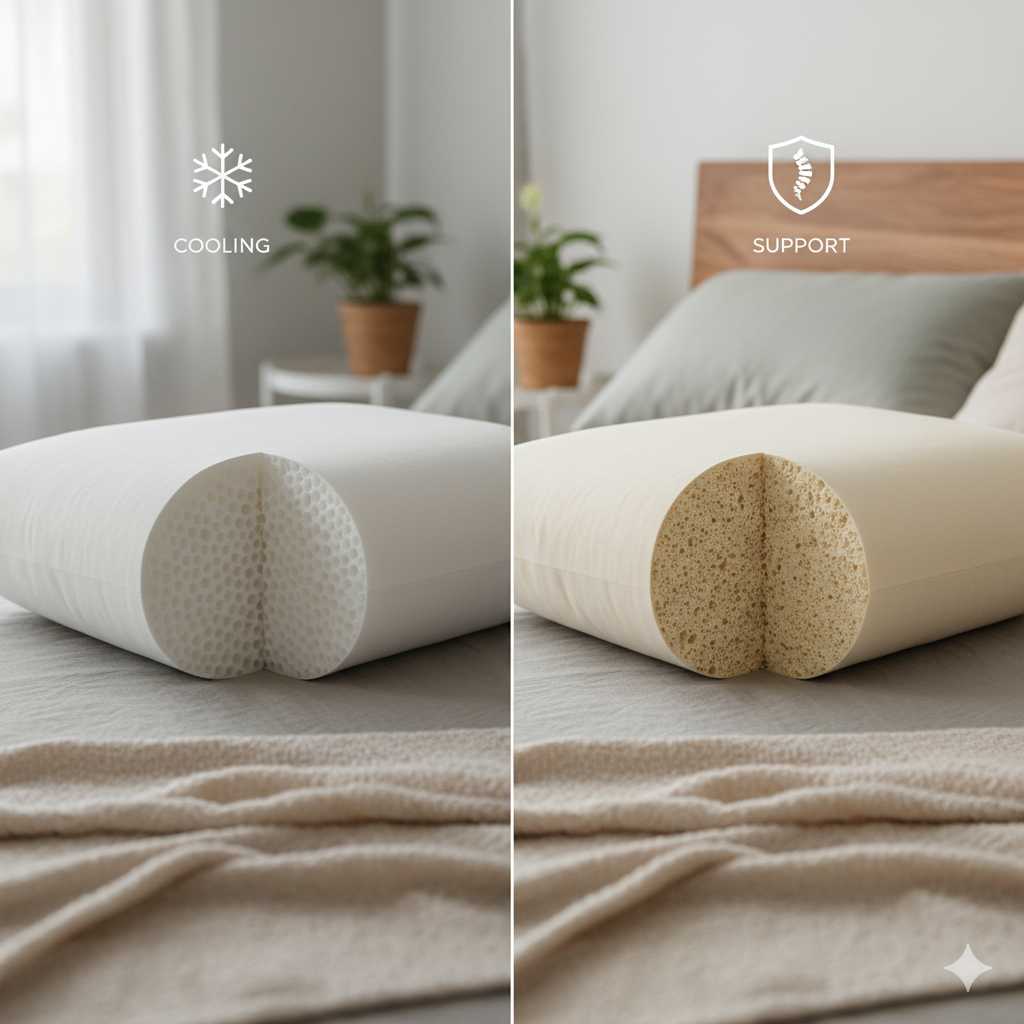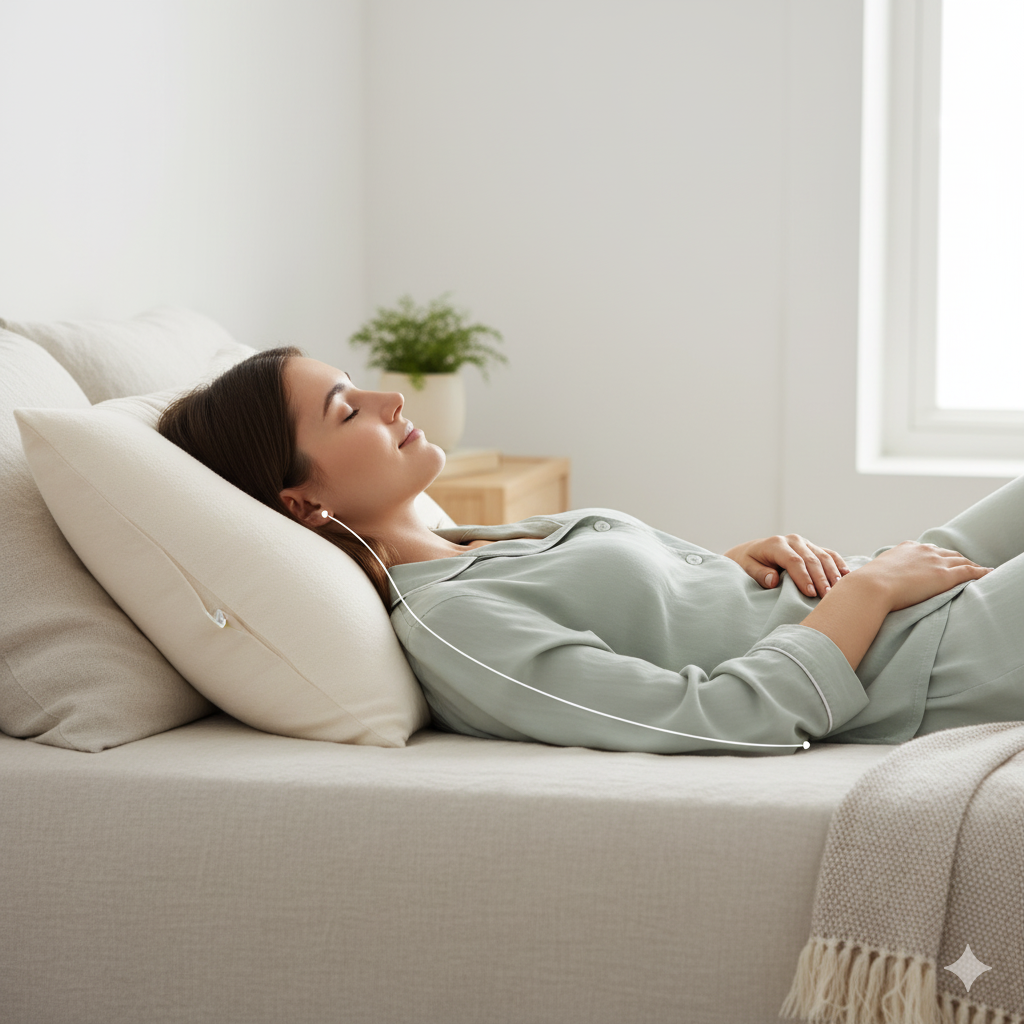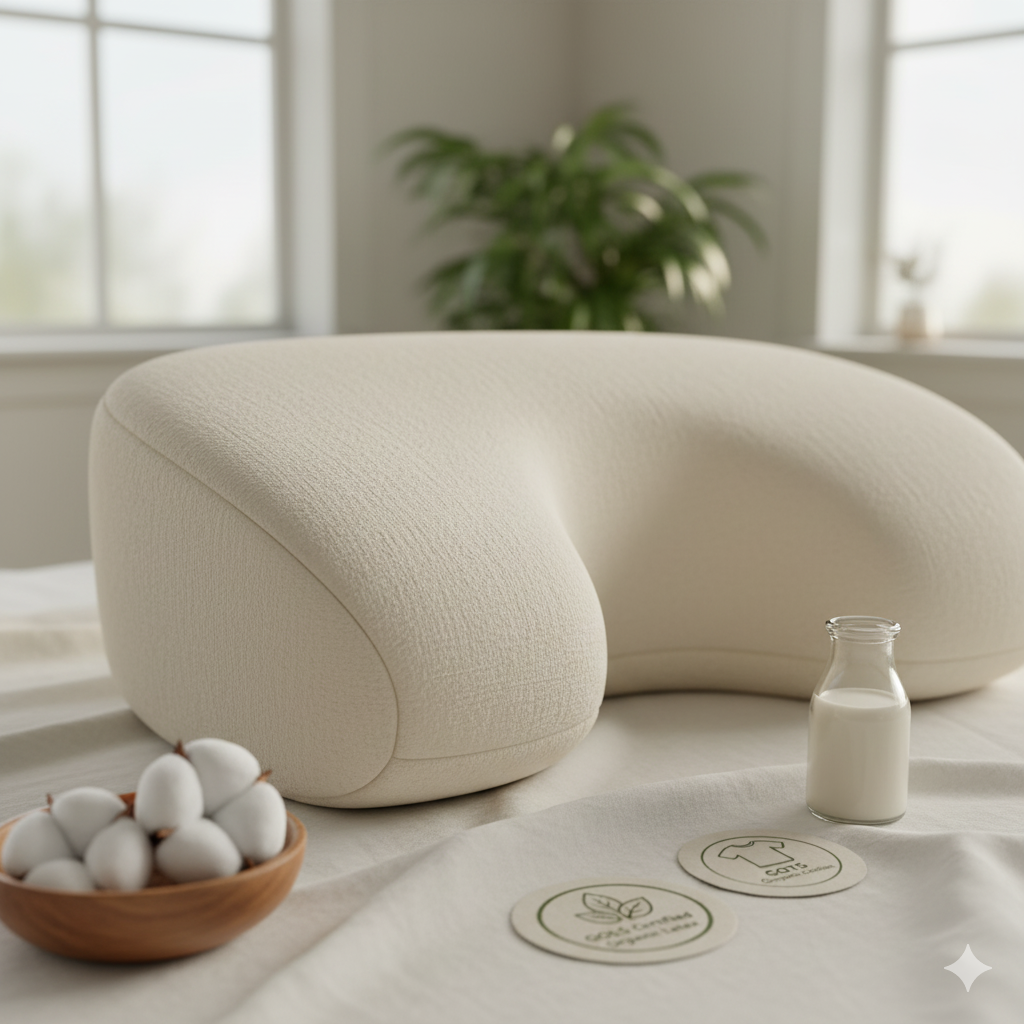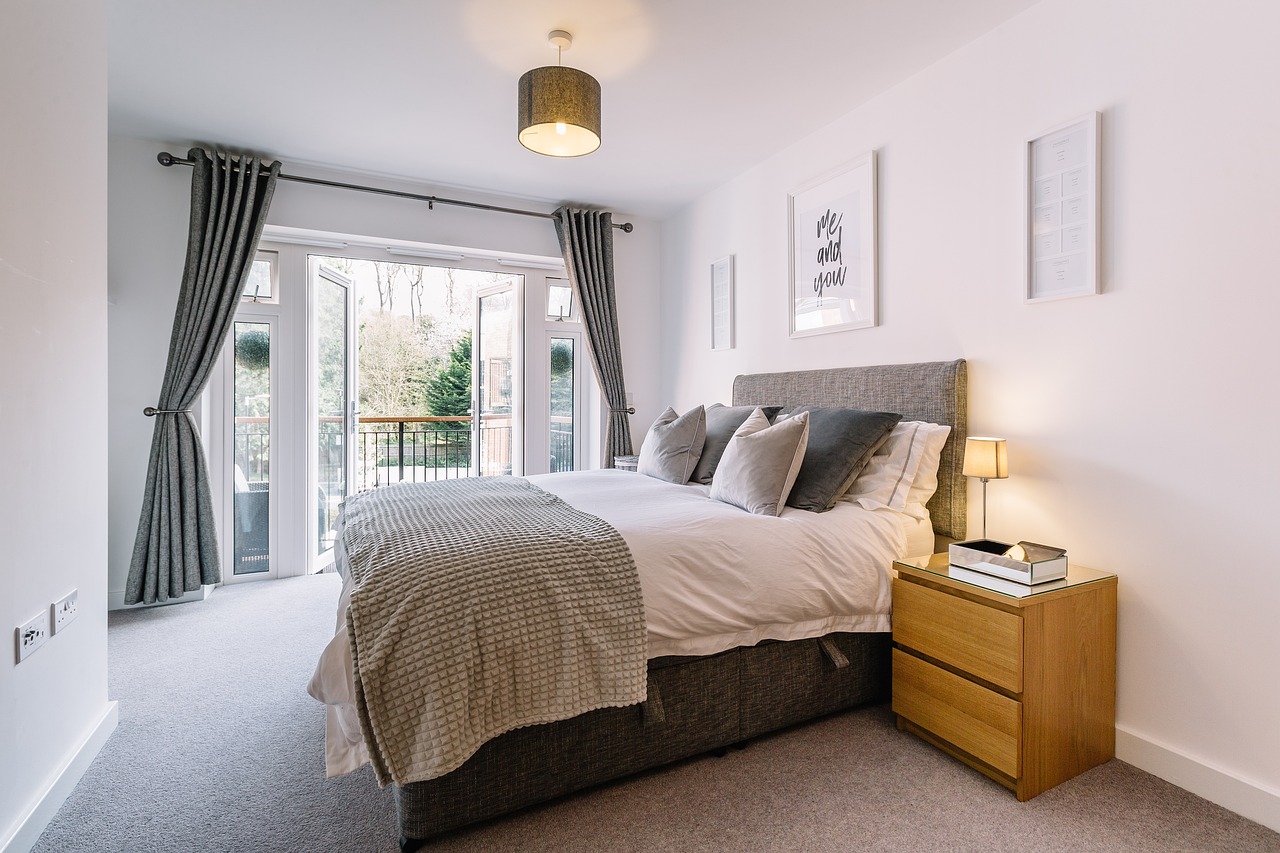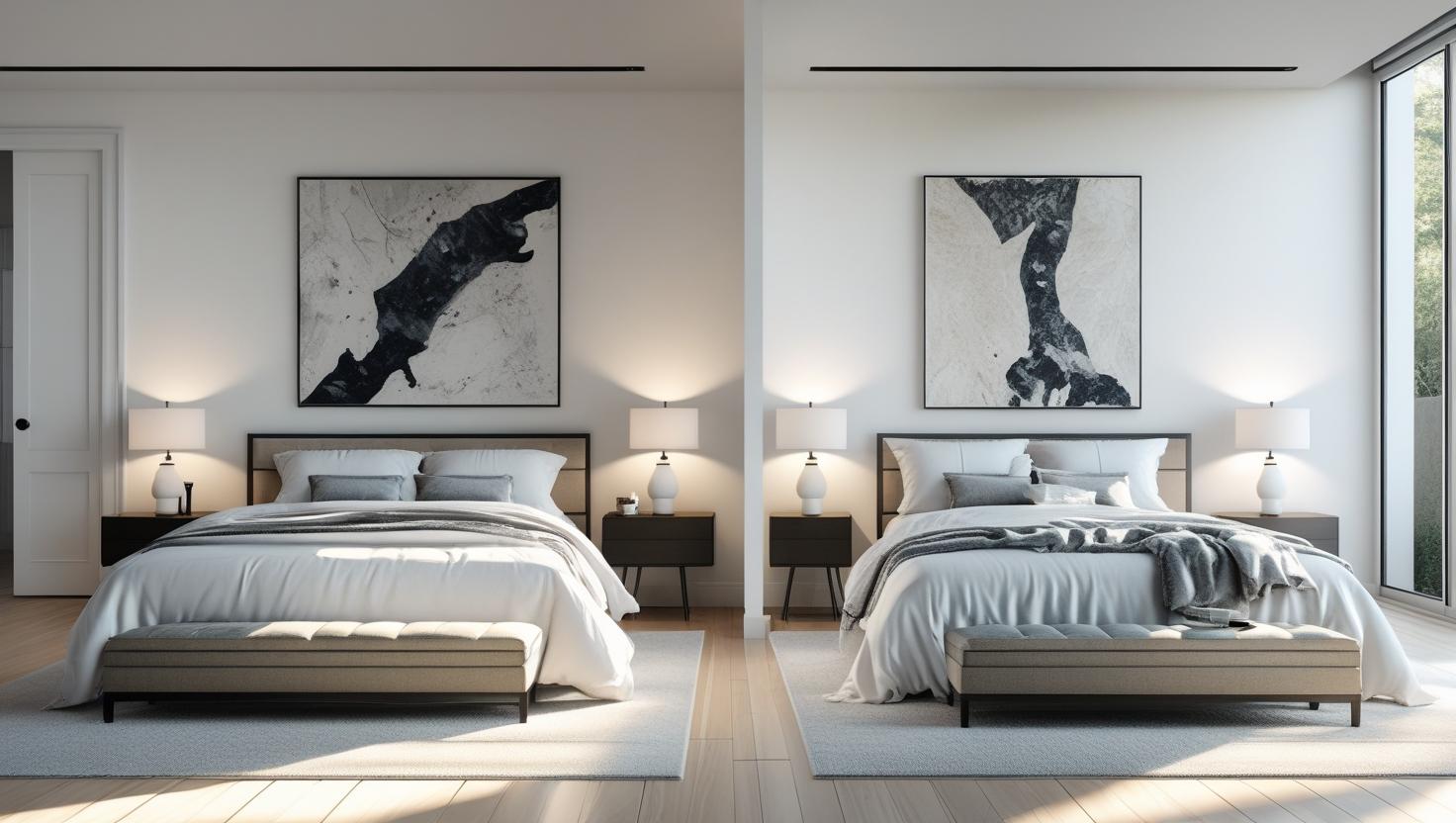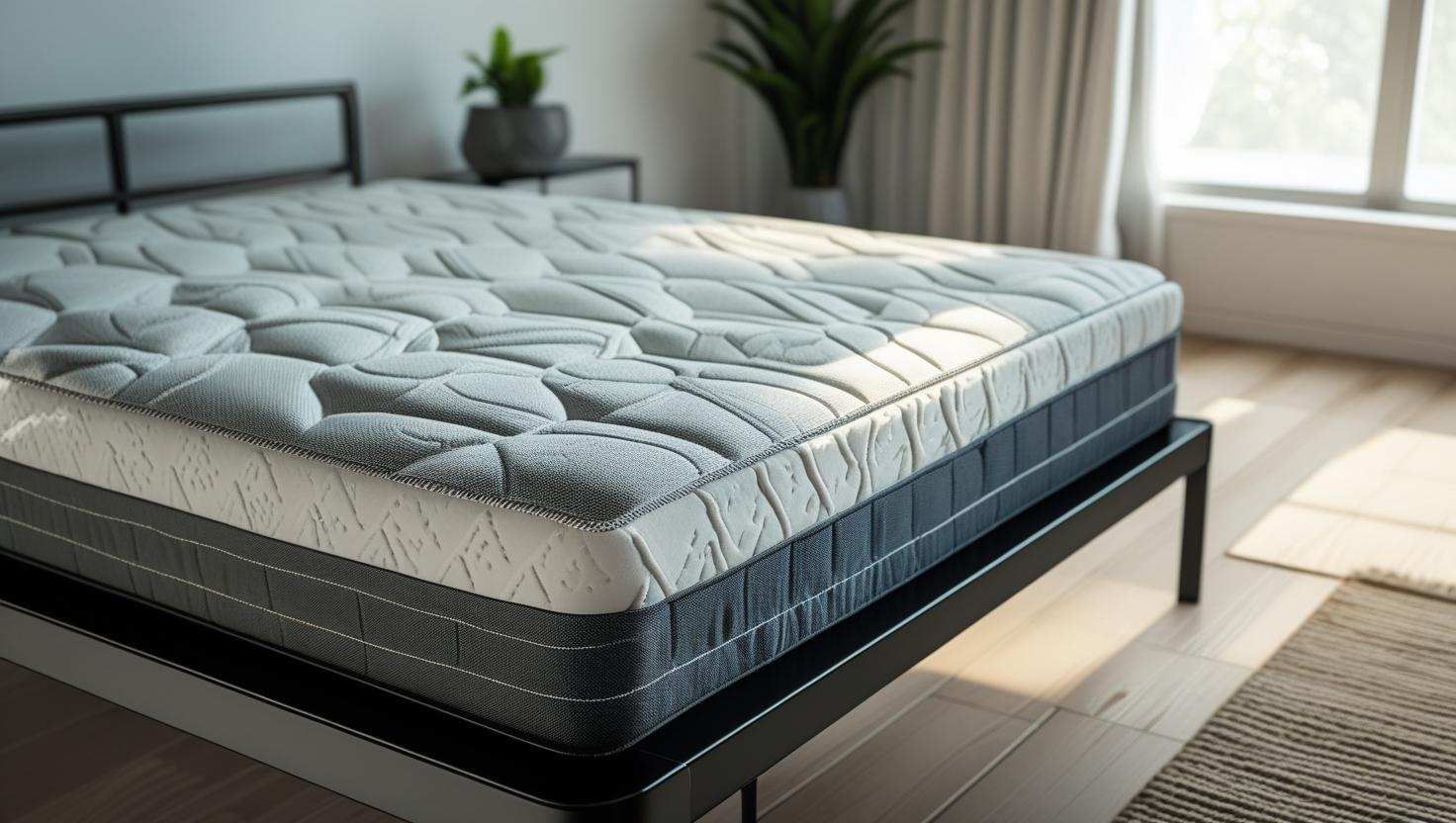What Is Pillow Loft
What Is Pillow Loft: A Practical Guide to the Right Height
If your pillow feels “off,” you’re not imagining it. what is pillow loft matters because the height your pillow holds under your head directly shapes neck alignment, muscle tension, and how you feel at sunrise. This guide gives you clear height targets by sleep position, easy tweaks for shoulder width and mattress firmness, a quick at-home fit test, and care tips so your perfect height actually lasts.
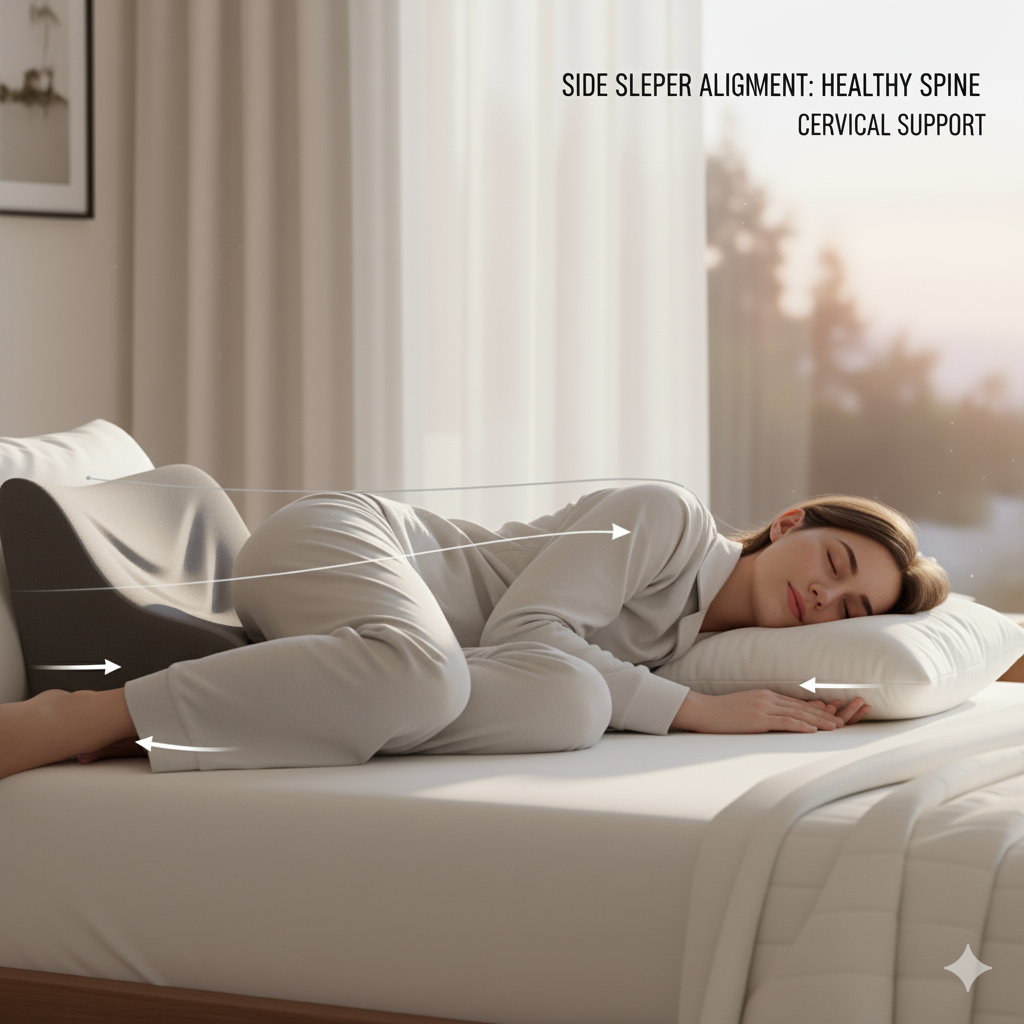
Loft Defined: How Pillow Height Affects Alignment
Quick answer: What is pillow loft? It’s your pillow’s effective height once it compresses. The right height keeps your head, neck, and spine lined up—no tilting, no tucking.
Key takeaways:
- “Effective” height is what you feel after the pillow settles.
- Too low → head dips; too high → chin tucks; both strain your neck.
- Foam/latex compress less; down/shredded fills compress more.
- Match what is pillow loft to sleep position, shoulder width, and mattress firmness.
Think of loft as the height you actually experience, not what’s printed on the box. Two “5-inch” pillows can sleep totally differently—memory foam tends to hold height; down usually sinks lower.
Neutral alignment is the goal. Your face points at the ceiling, ears stack over shoulders, and your neck feels… quiet. If mornings hurt, start by checking pillow height.
Materials matter. Dense foam and latex keep more height under load. Down, feather, and shredded blends compress more, so you may need a taller pillow to land at the same effective height.
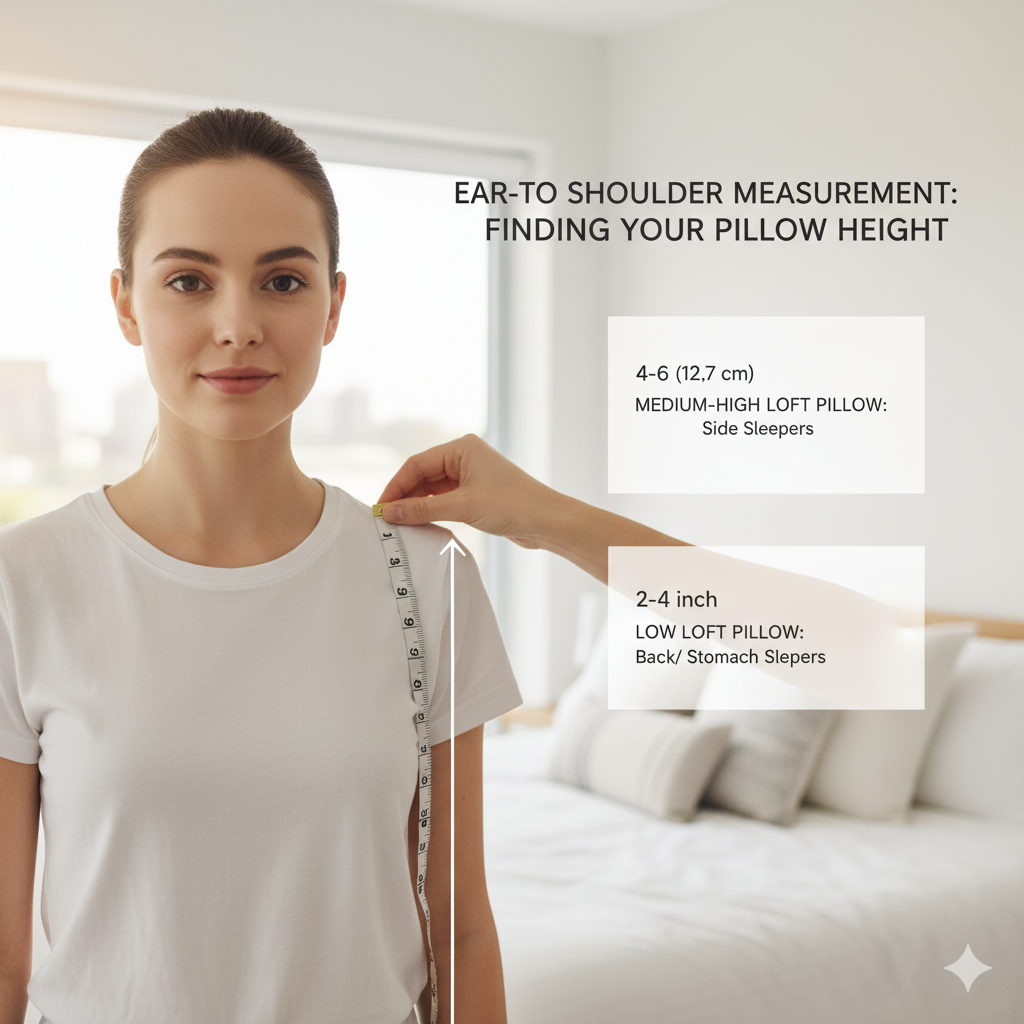
Low, Medium, High Loft: Pros & Cons
Quick answer: Low loft (2–3″) usually suits stomach sleepers, medium (3–5″) fits many back sleepers, and high (5–7″+) supports most side sleepers—then fine-tune for shoulders and mattress feel.
Key takeaways:
- Low: great for stomach sleepers; some smaller-framed back sleepers.
- Medium: a safe bet for most back sleepers and narrow-shouldered side sleepers.
- High: best for side sleepers, especially with broader shoulders or firm beds.
- At the same listed height, different materials “sleep” taller or flatter.
Low loft (2–3″): Helps keep stomach sleepers from cranking the neck. Compressible fills may need more fluffing and can flatten over time.
Medium loft (3–5″): A comfy middle ground for lots of back sleepers and some side sleepers with narrower shoulders. Broader shoulders or firm beds may still need more height.
High loft (5–7″+): Fills the ear-to-shoulder gap for side sleepers. Can be too tall for back or stomach sleeping, pushing the head forward.
Want a bigger decision framework? Peek at Choosing Pillows for Comfort: 7 Expert Tips.
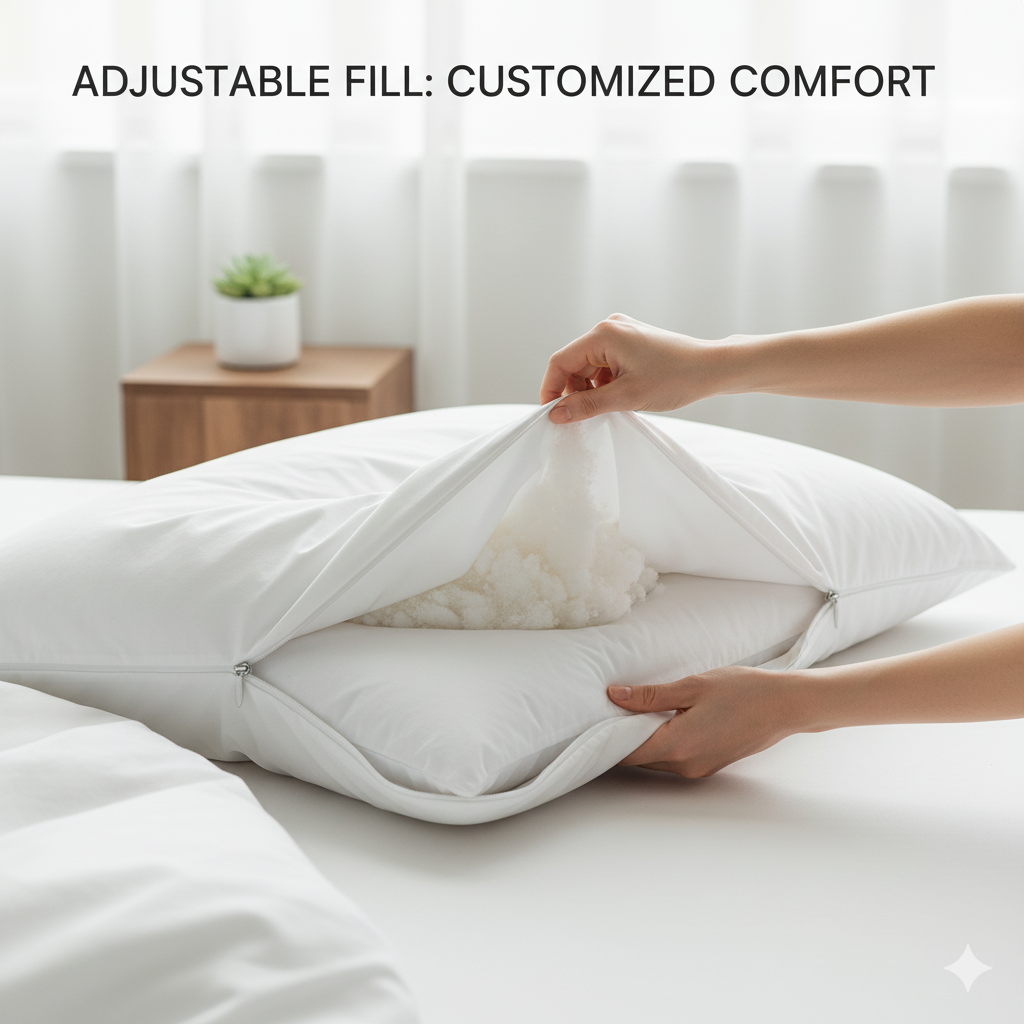
Choosing Loft by Sleep Position & Shoulder Width
Quick answer: Side sleepers usually need high loft (≈4.5–6.5″ effective), back sleepers medium (≈3.5–5″), stomach sleepers low (≈2–3″). Go higher for broader shoulders and firmer mattresses; go lower for softer beds.
Key takeaways:
- Side: ~4.5–6.5″ effective; adjust for shoulders and bed firmness.
- Back: ~3.5–5″ effective; a gentle neck contour can help.
- Stomach: ~2–3″ effective; some do best with no head pillow.
- Firmer beds often need more loft; softer beds, a touch less.
Side sleepers: Your pillow should fill the ear-to-shoulder space so your neck stays level. Narrow shoulders often land around 4.5–5.5″; broader shoulders, ~5.5–6.5″+. Firmer mattress? Add a little height. Softer mattress? You can subtract a bit.
Back sleepers: Aim for 3.5–5″ effective loft so your head’s supported without nudging your chin toward your chest. A subtle contour under the neck can feel great.
Stomach sleepers: Keep it as low as possible (2–3″). Some people do best without a head pillow and use a thin pillow under the hips to ease the lower back.
Round out your setup with our primers: Cozy Bedding Materials and Thread Count Explained.

Adjustable Fill & Customization Tips
Quick answer: Adjustable pillows make dialing in height simple. Start a bit tall, remove fill in small handfuls, test on your own bed, and save the extra for future top-ups.
Key takeaways:
- Begin slightly taller than you think, then subtract slowly.
- Measure height while lying down—it’s the only number that matters.
- Keep spare fill in a labeled bag for later refreshes.
- Record your final setting so you can recreate the same what is pillow loft result.
With shredded foam or down/feather, open the inner zipper and remove a handful at a time. After each tweak, lie down in your usual position on your actual mattress and reassess.
Judge with alignment, not just feel. Nose points up, no chin tuck, no head droop. If you switch positions, set loft for the way you sleep most of the night.
Over months, compressible fills settle. That saved bag of fill? It’s your easy refresh when support starts slipping.
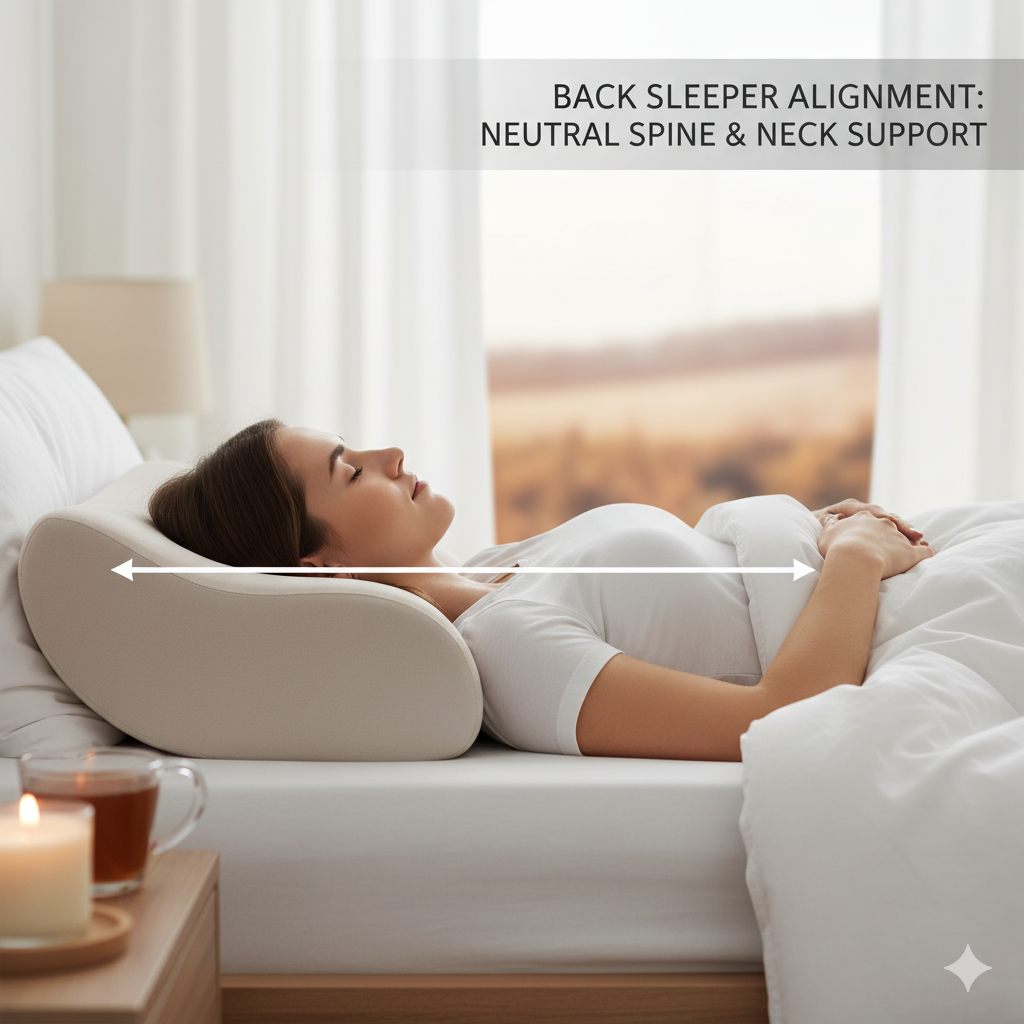
Try-At-Home Fit Test
Quick answer: Record a 10-second side profile at mattress height. Side/back sleepers: face parallel to the ceiling. Stomach sleepers: as flat as possible. Adjust until the line from neck to upper spine looks straight.
Key takeaways:
- Phone at mattress level, filming your side profile.
- Side: nose up, ears over shoulders.
- Back: chin neutral—not tucked.
- Stomach: keep the head as flat as you comfortably can.
Set the camera at bed height, relax onto your pillow, and hit record. Pause the video and mentally trace a line from the base of your skull down through your upper spine. Straight line? You’re there.
Small changes matter. A half-inch of fill can flip the result from “meh” to “perfect.” Re-test after each adjustment.
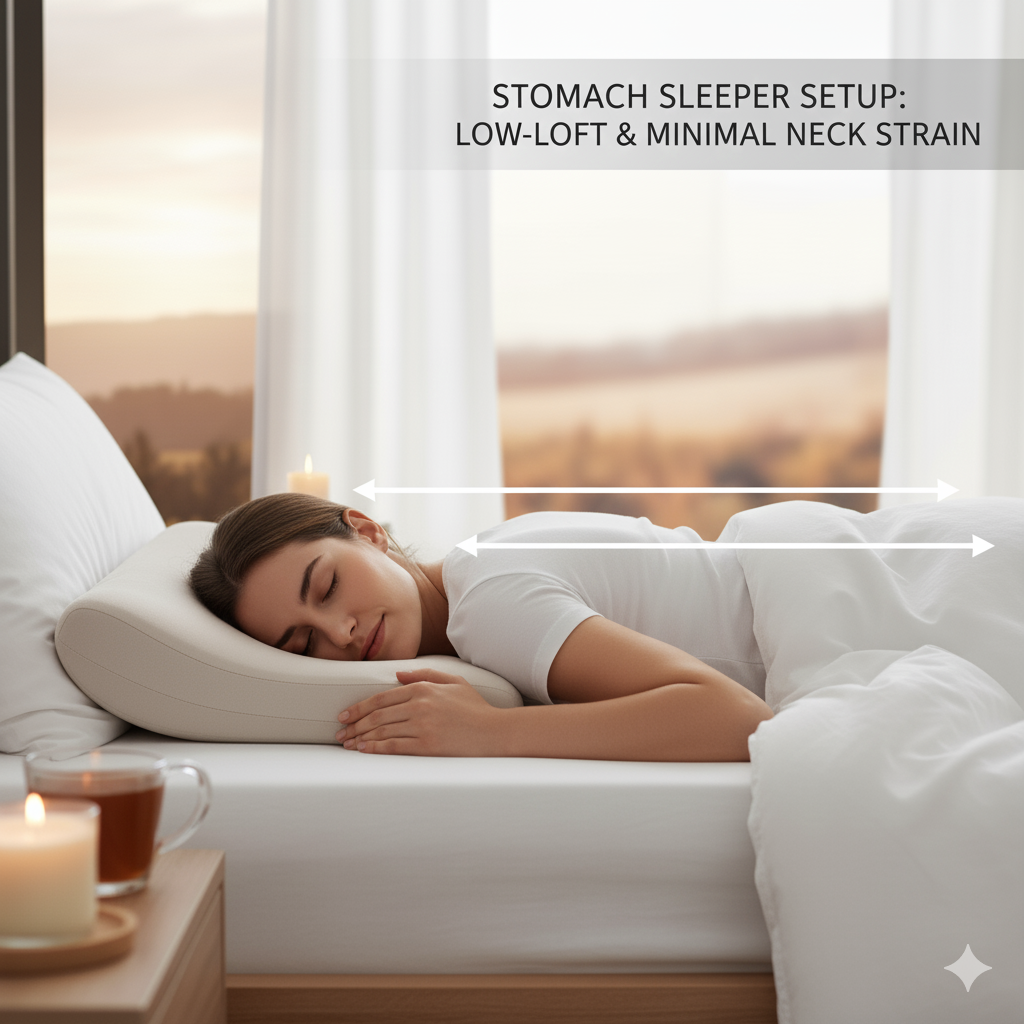
Care & Replacement Intervals
Quick answer: Refresh pillows every few months (material-dependent), fluff weekly if they’re compressible, and replace most pillows every 1–3 years—or sooner if support won’t bounce back.
Key takeaways:
- Down/feather & shredded fills: fluff and top up as needed.
- Solid foam/latex: spot clean, air out—no typical machine wash.
- Use a breathable protector to slow wear and odors.
- Replace when your what is pillow loft target no longer holds and alignment drifts.
Follow the care tag. Down/feather often tolerates gentle washing and thorough drying with dryer balls. Shredded fills perk up with sunning and manual fluffing.
Solid foam and latex don’t love washers—spot clean and air them out. A good protector keeps oils and dust at bay without changing the feel.
Upgrading the whole setup? Try our Comprehensive Mattress Selection Guide to sync mattress firmness with pillow height.
Quick Size Guide (Ear-to-Shoulder Estimate)
Quick answer: Measure a straight line from your ear canal to the tip of your shoulder while standing relaxed. That number approximates a side-sleeping effective loft on a medium-firm mattress.
Key takeaways:
- Firm bed? Add ~0.25–0.5″. Soft bed? Subtract ~0.25–0.5″.
- Foam/latex compress less—start close to the raw number.
- Down/shredded compress more—start ~0.5–1″ taller.
- Use this as a starting point, then refine with the fit test.
Have someone measure ear to shoulder tip. That’s the gap your pillow must fill on your side. It’s a quick way to get in range before you fine-tune.
Remember: softer beds let your shoulder sink (need less loft). Firmer beds keep you higher (need more loft).
Eco-Friendly vs Conventional Pillow Materials
Quick answer: Natural latex, organic cotton, and responsibly sourced down can keep loft steady with a lighter footprint. Conventional foams can feel great too—just look for credible certifications.
Key takeaways:
- Seek GOLS/GOTS and OEKO-TEX® where applicable.
- Natural latex often holds height longer than many down blends.
- Organic bedding and eco-conscious sheets round out a healthier setup.
- Certifications help cut through greenwashing and protect your ideal height for what is pillow loft.
If sustainability is your priority, natural latex offers springy, long-lasting support. Prefer a softer sink? Try responsibly sourced down with an organic cotton shell.
Look for GOLS (latex), GOTS (organic fibers), and OEKO-TEX® (chemical safety). Pair your pick with organic bedding benefits and smart sheet choices for a cleaner sleep space.

The Bottom Line
Quick answer: Start with position-based targets, adjust for shoulders and mattress feel, then confirm with the quick video test. The best pillow is the one that keeps your neck neutral—period.
Key takeaways:
- Side ≈ 4.5–6.5″; Back ≈ 3.5–5″; Stomach ≈ 2–3″ (effective loft).
- Firmer bed → add a bit; softer bed → subtract a bit.
- Adjustable fill makes precision easy.
- Re-check whenever your what is pillow loft setup or mattress changes.
When the pillow fits, sleep feels effortless. You fall asleep faster, wake up looser, and stop wrestling your bed. Re-measure if your body or mattress changes—great sleep is adjustable.

Key Takeaways: what is pillow loft
- Match what is pillow loft guidance to your position: side (higher), back (medium), stomach (low).
- Tweak for shoulder width and mattress firmness to hit true effective height.
- Use the video fit test to double-check neutral alignment.
- Maintain loft with smart care; replace when support won’t rebound.
- Certified, sustainable materials can keep loft steady for longer.
FAQ
- What’s the difference between pillow loft and firmness?
- Loft is height under your head after compression. Firmness is how soft or hard it feels. You can have a soft high-loft pillow or a firm low-loft pillow—they’re separate dials.
- How do I know if my pillow is too high?
- Watch for a tucked chin, tight upper back, or morning stiffness. In a side-profile photo, your face points slightly down instead of straight up.
- Can one pillow work for multiple positions?
- Sometimes. Adjustable-fill pillows can hit a compromise, but strict side-plus-stomach sleepers often do best with two pillows.
- How often should I replace a pillow?
- About every 1–3 years for most types. Replace sooner if loft won’t rebound, odors hang on, or your alignment slips.
- Do pillow protectors change loft?
- Not much if they’re breathable and well-fitted. They actually help preserve loft by blocking oils and dust.
More resources from Cozy Bed Quarters:
Choosing Pillows for Comfort •
Bedding Accessories: Pillows & Toppers •
Comprehensive Mattress Selection Guide •
Bedding Materials Guide •
Organic Bedding Benefits
Trusted references:
Sleep Foundation •
Parachute Home •
Better Homes & Gardens
Final Thoughts
Dialing in what is pillow loft for your body and mattress pays off fast: fewer morning aches, easier sleep onset, and steadier comfort through the night. Re-test your setup whenever your mattress or routine changes to stay in the sweet spot.








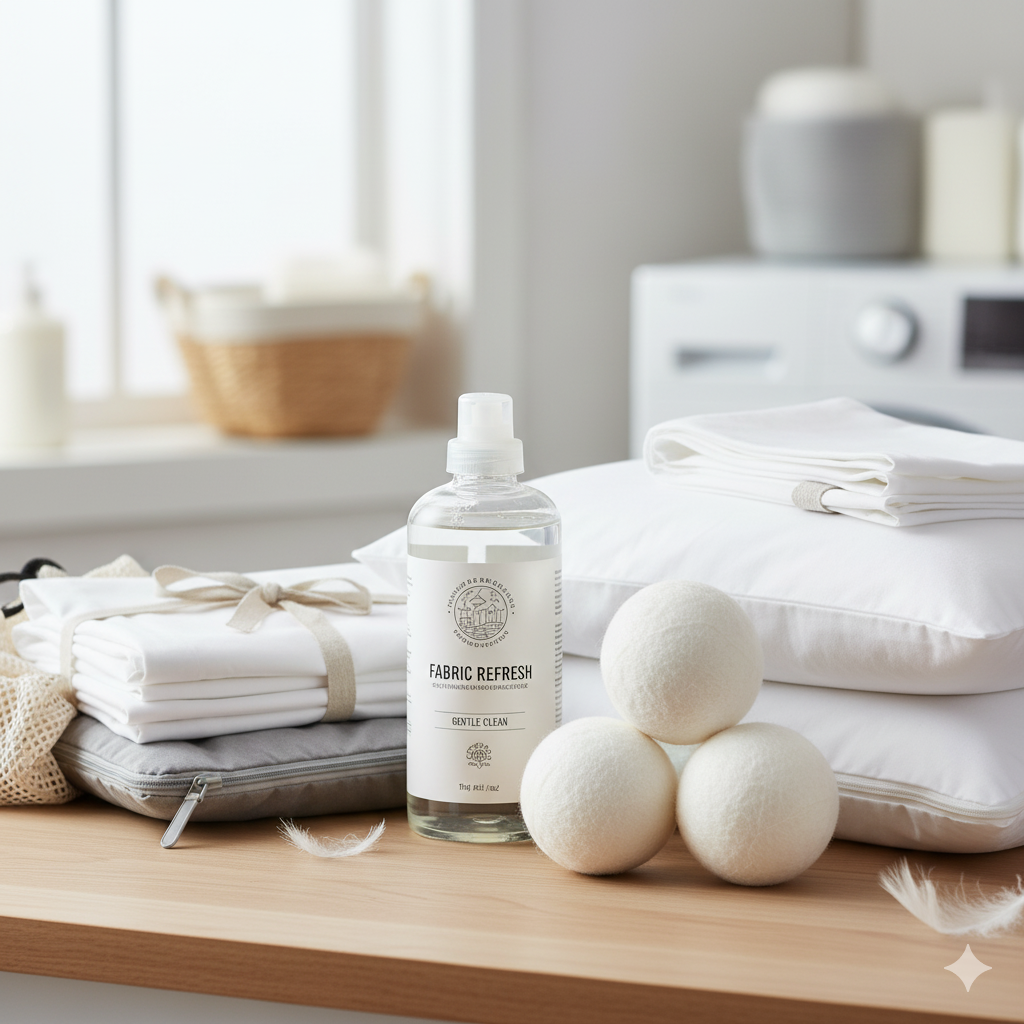 Down fill (left) offers natural loft; memory foam (right) sculpts to your neck’s curve.
Down fill (left) offers natural loft; memory foam (right) sculpts to your neck’s curve.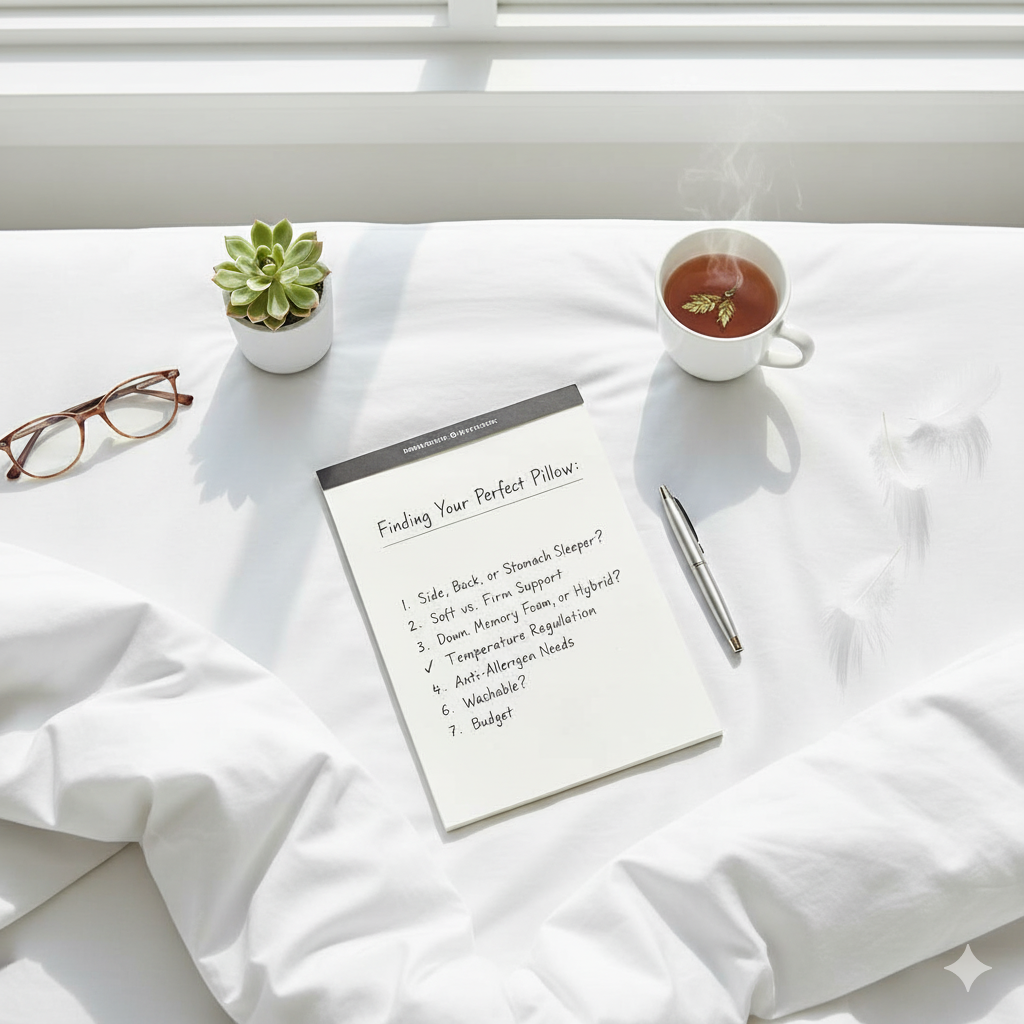 Keep your pillow fresh: use protectors, wash carefully, and dry fully for lasting loft.
Keep your pillow fresh: use protectors, wash carefully, and dry fully for lasting loft.

